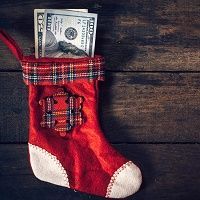- Revenue Cycle Management
- COVID-19
- Reimbursement
- Diabetes Awareness Month
- Risk Management
- Patient Retention
- Staffing
- Medical Economics® 100th Anniversary
- Coding and documentation
- Business of Endocrinology
- Telehealth
- Physicians Financial News
- Cybersecurity
- Cardiovascular Clinical Consult
- Locum Tenens, brought to you by LocumLife®
- Weight Management
- Business of Women's Health
- Practice Efficiency
- Finance and Wealth
- EHRs
- Remote Patient Monitoring
- Sponsored Webinars
- Medical Technology
- Billing and collections
- Acute Pain Management
- Exclusive Content
- Value-based Care
- Business of Pediatrics
- Concierge Medicine 2.0 by Castle Connolly Private Health Partners
- Practice Growth
- Concierge Medicine
- Business of Cardiology
- Implementing the Topcon Ocular Telehealth Platform
- Malpractice
- Influenza
- Sexual Health
- Chronic Conditions
- Technology
- Legal and Policy
- Money
- Opinion
- Vaccines
- Practice Management
- Patient Relations
- Careers
December Financial Tips
The end of the year has a number of significant financial implications that we should not lose sight of in our merriment. And being aware of some of them will allow us to feel better and maybe save some money, even if we are sometimes profligate in our holiday shopping.

The end of the year has a number of significant financial implications that we should not lose sight of in our merriment. And being aware of some of them will allow us to feel better and maybe save some money, even if we are sometimes profligate in our holiday shopping.
For instance, most experts say that a store gift card, often temptingly hung for a last-minute impulse buy next to the cash register, is a bad idea. There are fees, rules, and sometimes expiration dates involved which may make the gift less useful than a straight cash gift. Also, as I have pointed out before, stores love selling these things because a surprising number of them never get used. Free money for them—your money. Or the card doesn’t get used for months, a free loan to them from you, thank you very much. It should be noted that there are places online which will buy them from you, at a discount, of course.
Charities report that they get about 40% of their year’s total donations at the end of the year. That’s one reason why we get inundated with beseeching requests, often sent with those sticker address sheets. If tax and philanthropic planning is your reason for doling out your largesse in December, good for you. If you are just full of holiday cheer and want to spread it around, good for you. But be mindful that all charities are not created equal and some spend a surprisingly small amount of their budget on actual good works. Do some homework and you’ll feel an even bigger holiday glow if you pick carefully to maximize your donation’s impact.
When you are out shopping, particularly at the big box stores, you will save a bundle if you plan your attack instead of just wandering. First of all, it has been found that a smaller basket will reduce your impulse spending. Those truck-size vehicles the stores issue fairly cry out for you to put things in them, anything so you don’t look like a Scrooge in the check-out line.
Next, realize that there is a reason why things are placed just so in these emporiums; very little is unstudied. The relative bargains are placed at the back of the store, so that you have to do a drive-by of the higher margin goods to get back there. Also, hot items tend to be on pallets in the middle of the store. Be careful of the goods being pushed on the displays at the end-cap of the aisles. These are higher-margin goods for the stores.
Look at the pricing. We all know the old “.99” trick to make things look cheaper than they are, but watch for prices that end in .97 because that can be store code for a (cheaper) close-out, .79, .49, and .88 may also have similar meaning. An asterisk by the price may mean that the item is not being re-ordered and so is a good buy.
To pay for all of this, consider the “Santa Claus Rally,” which is a rising market in December. The Wall Street Journal reports a study that showed that 77% of the time it happens, and if it does, 67% of Januarys are also up. If January is up, 90% of the time the year will follow on an up note. Cold comfort in off years, but great for rationalizing your spending if it happens to be an up year.
The sober lesson for the whole year, not just holiday spending, is that every time you do not spend money, you are giving yourself a functional raise. Declining prices at the gas pump, for example, are a timely pseudo-raise/tax cut for many in 2014. And not to be a Grinch, realize that “savings” in ads always mean more spending. In fact, many bald-faced ads proudly proclaim “the more you spend, the more you save!” How’s that for spin reasoning? Happy Holidays and I will see you in 2015.
